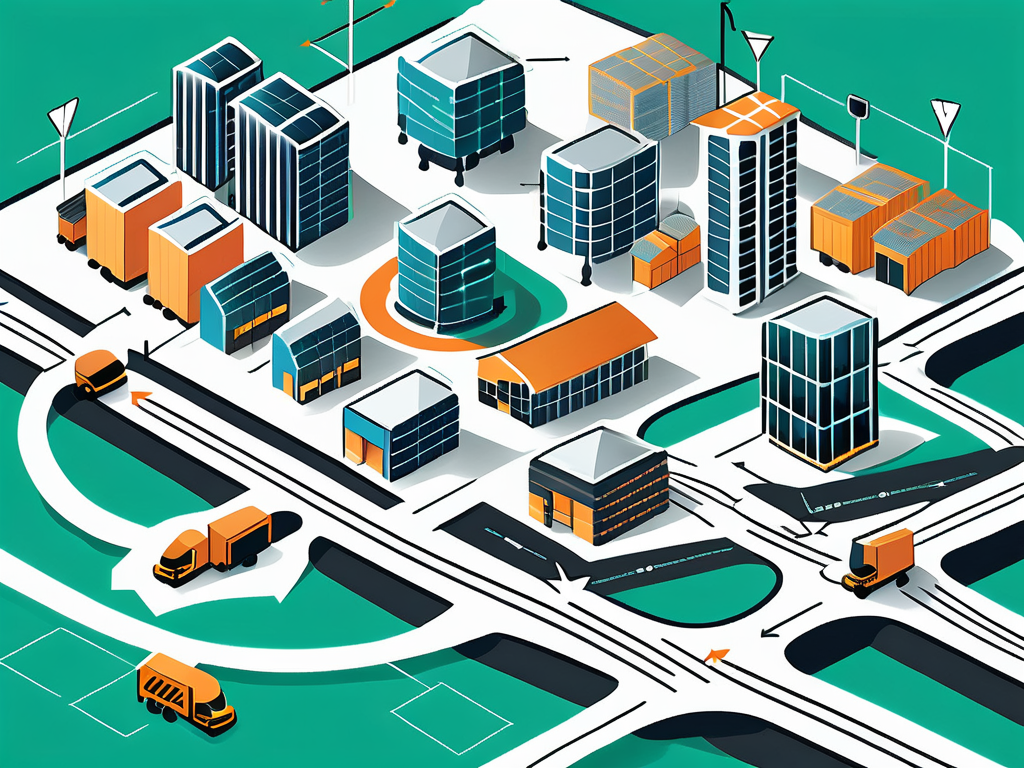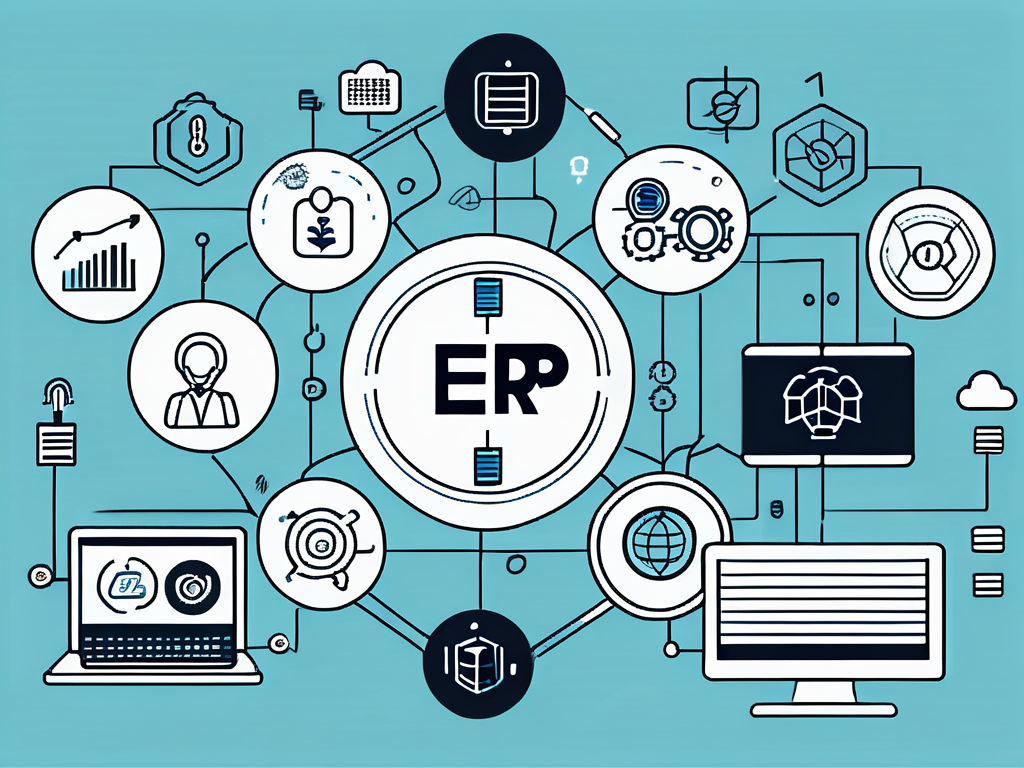Running a business with multiple locations can feel like navigating a maze blindfolded—every corner has its own set of surprises. Managing inventory, coordinating teams, and ensuring smooth financial operations across different sites is no small feat.
So, how ERP solution handles multiple-location operations is a game-changer. It streamlines everything from data management to supply chain coordination, bringing order to the chaos and ensuring that every location is aligned with the same goals.
10 Ways ERP Enhances Multi-Location Operations: Simplify, Optimize, and Grow
Managing operations across multiple locations can quickly become overwhelming without the right tools in place. As businesses grow and expand their reach, the complexity of handling data, inventory, finances, and customer interactions multiplies.
Enter ERP (Enterprise Resource Planning) systems—powerful software solutions designed to centralize, streamline, and optimize business processes. With ERP, multi-location businesses can break down operational barriers, making it easier to maintain consistency, improve communication, and drive growth.
Below, we’ll explore 10 critical ways an ERP solution can transform how you manage multiple locations, enabling your business to operate more efficiently, accurately, and strategically.
1. Centralized Data Management
In the world of multi-location operations, centralized data management is the backbone of efficient ERP systems. It ensures that all locations are working with the same, up-to-date information, leading to better decision-making and smoother operations.
Real-time Data Synchronization
- Instant Updates: Changes made in one location are immediately reflected across the entire system.
- Reduced Errors: Eliminates the risk of working with outdated information.
- Improved Collaboration: Teams across different locations can work together seamlessly.
Single Source of Truth Across Locations
- Data Consistency: All locations access the same centralized database, ensuring uniformity.
- Simplified Auditing: Easier to track changes and maintain data integrity.
- Enhanced Decision Making: Leadership can trust the data for strategic planning.

2. Inventory Management Across Locations
Effective inventory management is crucial for businesses operating in multiple locations. ERP solutions provide tools to optimize stock levels and predict demand accurately.
Stock Transfers and Tracking
- Inter-location Transfers: Easily move inventory between locations to meet demand.
- Real-time Visibility: Track the status and location of all inventory items.
- Automated Alerts: Set up notifications for low stock levels or overstock situations.
Demand Forecasting for Each Location
- Data-driven Predictions: Use historical data and trends to forecast future demand.
- Location-specific Insights: Tailor inventory levels to the unique needs of each location.
- Seasonal Adjustments: Account for location-specific seasonal variations in demand.
3. Financial Consolidation and Reporting
ERP solutions streamline financial processes across multiple locations, providing a clear picture of the overall financial health of the organization.
Multi-currency Support
- Automatic Conversions: Handle transactions in different currencies seamlessly.
- Exchange Rate Management: Keep exchange rates updated for accurate financial reporting.
- Currency Risk Assessment: Analyze the impact of currency fluctuations on your business.
Location-specific and Consolidated Financial Statements
- Granular Reporting: Generate financial reports for individual locations.
- Roll-up Capabilities: Easily consolidate financial data from all locations.
- Customizable Dashboards: Create visual representations of financial data for quick insights.
4. Supply Chain Optimization
ERP systems help businesses streamline their supply chain operations across multiple locations, leading to cost savings and improved efficiency.
Coordinated Purchasing Across Locations
- Bulk Ordering: Combine orders from multiple locations for better negotiating power.
- Supplier Management: Maintain a centralized database of suppliers for all locations.
- Purchase Order Automation: Streamline the purchasing process with automated workflows.
Streamlined Distribution and Logistics
- Route Optimization: Plan the most efficient delivery routes across locations.
- Warehouse Management: Optimize storage and picking processes in multiple warehouses.
- Shipment Tracking: Provide real-time updates on shipments to all relevant locations.
5. Customer Relationship Management
ERP solutions enable businesses to maintain consistent customer relationships across all locations, enhancing customer satisfaction and loyalty.
Unified Customer View Across All Locations
- Centralized Customer Database: Access customer information from any location.
- Interaction History: View all customer interactions, regardless of the contact point.
- 360-degree Customer Profiles: Understand customer preferences and history for personalized service.
Consistent Customer Experience Regardless of Location
- Standardized Processes: Ensure the same high-quality service at every location.
- Cross-location Support: Seamlessly transfer customer issues between locations.
- Unified Communication Channels: Maintain consistency in customer communications across all touchpoints.
6. Human Resource Management
ERP systems help standardize HR processes across multiple locations, ensuring consistency and efficiency in managing human capital.
Standardized HR Processes Across Locations
- Uniform Policies: Implement consistent HR policies across all locations.
- Centralized Employee Records: Maintain a single database for all employee information.
- Automated Workflows: Streamline processes like onboarding and performance reviews.
Employee Self-Service Portals
- 24/7 Access: Allow employees to access their information and perform HR tasks anytime.
- Reduced Administrative Burden: Empower employees to manage their own data and requests.
- Mobile Accessibility: Provide access to HR services through mobile devices for remote workers.
7. Compliance and Risk Management
ERP solutions help businesses navigate the complex landscape of regulations and risk management across multiple locations.
Location-specific Regulatory Compliance
- Customizable Rule Sets: Configure compliance rules based on local regulations.
- Automated Compliance Checks: Ensure all transactions and processes adhere to local laws.
- Audit Trails: Maintain detailed records for compliance audits.
Centralized Risk Assessment and Mitigation
- Risk Dashboard: Monitor potential risks across all locations in real-time.
- Scenario Planning: Analyze the impact of potential risks on different locations.
- Incident Reporting: Standardize the process of reporting and addressing risk incidents.
8. Scalability and Flexibility
ERP systems designed for multi-location operations offer the scalability and flexibility needed to grow and adapt to changing business needs.
Easy Addition of New Locations
- Rapid Deployment: Quickly set up new locations with pre-configured templates.
- Data Migration Tools: Easily integrate existing data from new locations.
- Training Resources: Provide standardized training materials for new location staff.
Customization for Location-specific Needs
- Modular Design: Add or remove features based on each location’s requirements.
- Configurable Workflows: Adapt processes to fit local business practices.
- API Integration: Connect with location-specific third-party tools and services.
9. Business Intelligence and Analytics
ERP solutions provide powerful analytics capabilities to gain insights across multiple locations and drive data-informed decisions.
Cross-location Performance Comparisons
- Benchmarking Tools: Compare KPIs across different locations.
- Performance Dashboards: Visualize performance metrics for easy comparison.
- Best Practice Identification: Identify top-performing locations and replicate their strategies.
Data-driven Decision Making
- Predictive Analytics: Use data from all locations to forecast trends and outcomes.
- What-if Scenarios: Model the impact of potential decisions across multiple locations.
- Real-time Reporting: Access up-to-date data for timely decision-making.

10. Cloud-based ERP Solutions for Multi-Location Operations
Cloud-based ERP solutions offer unprecedented advantages for businesses operating across multiple locations, providing seamless accessibility and significant cost savings.
Accessibility from Anywhere
Cloud-based ERP systems break down geographical barriers, allowing organizations to access critical business information and processes from any location with an internet connection.
- Global Access: Access the ERP system from any device (computer, tablet, smartphone) in any location.
- Real-time Collaboration: Enable teams across different locations to work together seamlessly on shared data and processes.
- Mobile Functionality: Leverage mobile apps for on-the-go access to key ERP functions and data.
Reduced IT Infrastructure Costs
By moving to the cloud, businesses can significantly lower their total cost of ownership for ERP systems, eliminating the need for extensive on-premises infrastructure.
- Eliminated Hardware Costs: Remove the need for on-site servers and related hardware maintenance.
- Automatic Updates: Receive software updates and security patches automatically without IT intervention.
- Scalable Resources: Easily scale computing resources up or down based on business needs without additional hardware investments.
Enhanced Security and Reliability
Cloud-based ERP solutions offer robust security measures and high reliability, crucial for businesses operating across multiple locations.
- Advanced Security Protocols: Benefit from enterprise-grade security measures implemented by cloud providers.
- Disaster Recovery: Ensure business continuity with built-in backup and recovery solutions.
- High Availability: Access your ERP system 24/7 with minimal downtime, crucial for global operations.
Rapid Deployment and Scalability
Cloud-based ERP solutions enable businesses to quickly set up new locations and scale their operations efficiently.
- Quick Setup: Deploy the ERP system to new locations rapidly without the need for on-site IT infrastructure.
- Standardized Processes: Implement standardized business processes across all locations easily.
- Flexible Scalability: Add or remove users, modules, or entire locations as your business needs change.
By leveraging cloud-based ERP solutions, businesses can effectively manage their multi-location operations with greater flexibility, efficiency, and cost-effectiveness, driving growth and competitiveness in the global marketplace.
Implementation Challenges and Best Practices
Implementing an ERP solution is a complex process, and when it comes to managing multiple locations, the complexity multiplies.
Each site may have different operational procedures, cultures, and technological infrastructures, making it difficult to achieve seamless integration across the board.
Common challenges include:
- Data Migration and Integration: Moving historical data from old systems to a new ERP platform often leads to compatibility issues, data duplication, or even loss of vital information.
- Customization and Standardization: Balancing the need for location-specific customizations while maintaining overall business standardization can be tricky.
- Resource Constraints: Whether it’s a lack of technical expertise or budget overruns, resource limitations often slow down the implementation process.

However, these challenges can be managed with a well-thought-out strategy. Here are some best practices to follow:
- Conduct a Comprehensive Needs Assessment: Before diving into implementation, identify the specific needs of each location and ensure the ERP system aligns with these needs while maintaining uniformity across locations.
- Phased Rollout: Instead of deploying ERP across all locations at once, opt for a phased approach, starting with a pilot location. This allows for troubleshooting and adjustments before scaling up.
- Cross-functional Team Involvement: Form a team of key stakeholders from different locations to represent their unique needs and ensure a smooth transition.
Change Management Across Locations
Change management is often one of the most underestimated factors in ERP implementation. The introduction of a new ERP system can disrupt established workflows and trigger resistance from employees, especially in organizations with multiple locations.
Each location may have its own culture and way of doing things, making the adoption of a unified ERP system even more challenging.
Best Practices for Change Management:
- Clear Communication: Keep employees at all levels informed about the goals and benefits of the ERP system. Explain how the system will make their jobs easier and what improvements it will bring. Transparency reduces uncertainty and resistance.
- Localized Approach: While the overarching change management strategy should remain consistent, recognize that each location is different. Tailor your communication and engagement tactics to fit each location’s unique culture and workforce.
- Leadership Alignment: Secure the support of local leaders and managers, as their influence will be key to driving adoption at each site. Employees are more likely to embrace change if they see their leaders actively supporting it.
- Employee Involvement: Get employees involved early in the process by soliciting their feedback and concerns. Employees who feel like they are part of the decision-making process are more likely to support the change.
Training and Adoption Strategies
The success of any ERP system heavily depends on how well employees are trained to use it. Lack of proper training often leads to underutilization, confusion, and errors, which can significantly reduce the return on investment (ROI) of the system.
For multi-location businesses, training becomes even more critical because employees across different sites may have varying levels of technological proficiency and business needs.
Best Practices for Training and Adoption:
- Role-specific Training Programs: Different roles within the organization require different levels of interaction with the ERP system. Tailor training sessions to address the specific needs of each department or team, ensuring that everyone is equipped with the skills relevant to their role.
- Hands-on, Interactive Learning: Create training environments where employees can practice using the ERP system in real-world scenarios. This could include simulated tasks or sandbox environments where mistakes are allowed and lessons can be learned before going live.
- Ongoing Training and Support: ERP adoption isn’t a one-time event. Continuous learning should be encouraged with regular refresher courses, updates on new features, and an accessible helpdesk or support team to address any issues that arise post-implementation.
- Feedback and Iteration: Create a feedback loop that allows employees to voice any difficulties they encounter. Use this information to refine the training program or make necessary adjustments to the system’s configuration.
By addressing the challenges of ERP implementation with robust change management and effective training strategies, businesses can ensure a smooth transition and maximize the benefits of their ERP solution across all locations.
Simplify and Optimize Multi-Location Operations with a Robust ERP System
Managing multiple locations doesn’t have to be overwhelming. A robust ERP system can simplify complex processes by centralizing data, streamlining inventory management, and enhancing financial reporting across all locations.
With real-time synchronization, coordinated supply chains, and unified customer management, ERP empowers businesses to operate efficiently and strategically, no matter how many sites they oversee.
Whether you’re aiming to scale, improve decision-making, or maintain consistent customer experiences, an ERP solution can turn multi-location challenges into opportunities for growth. Invest in an ERP system today and unlock the full potential of your business operations.

